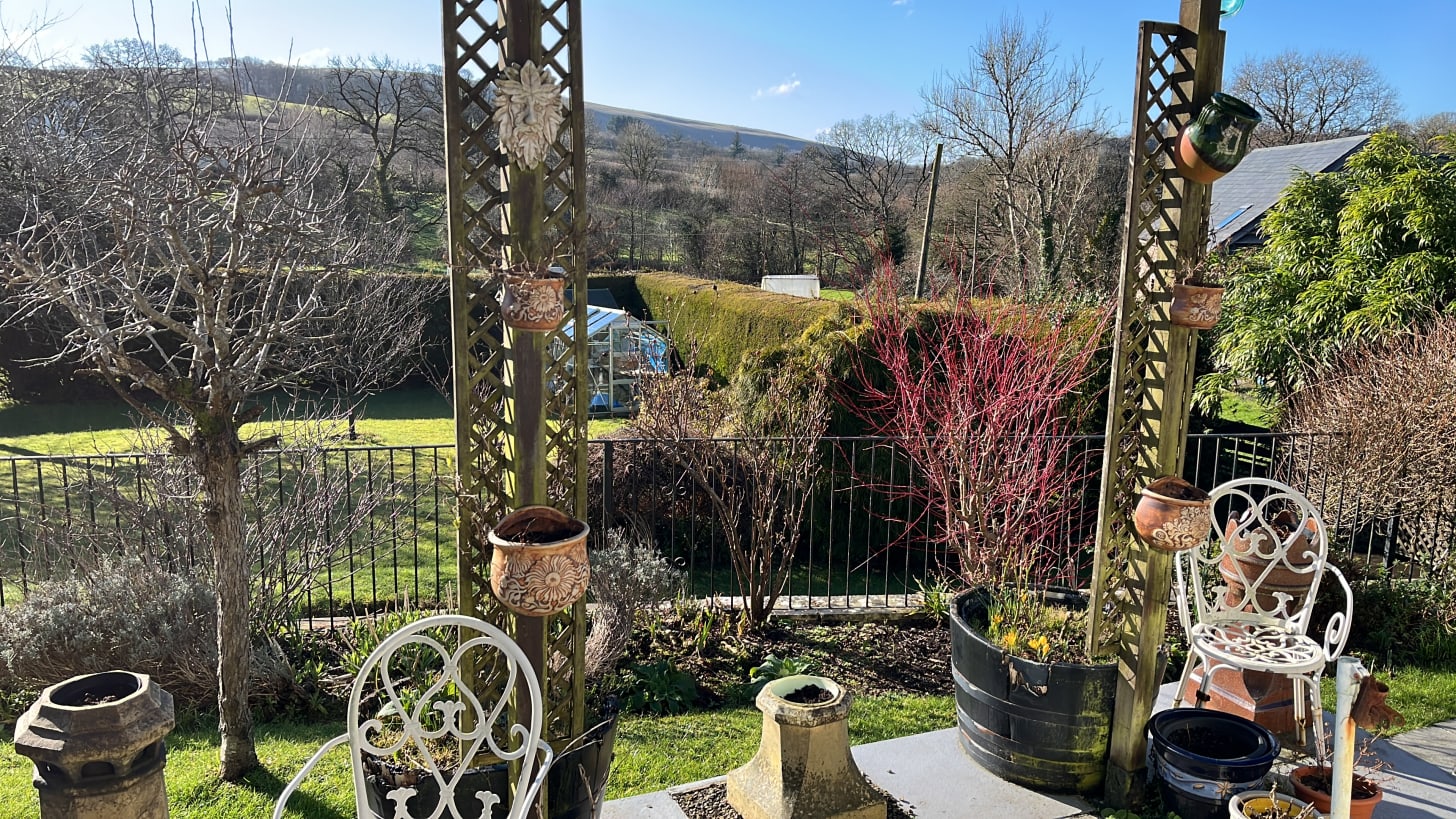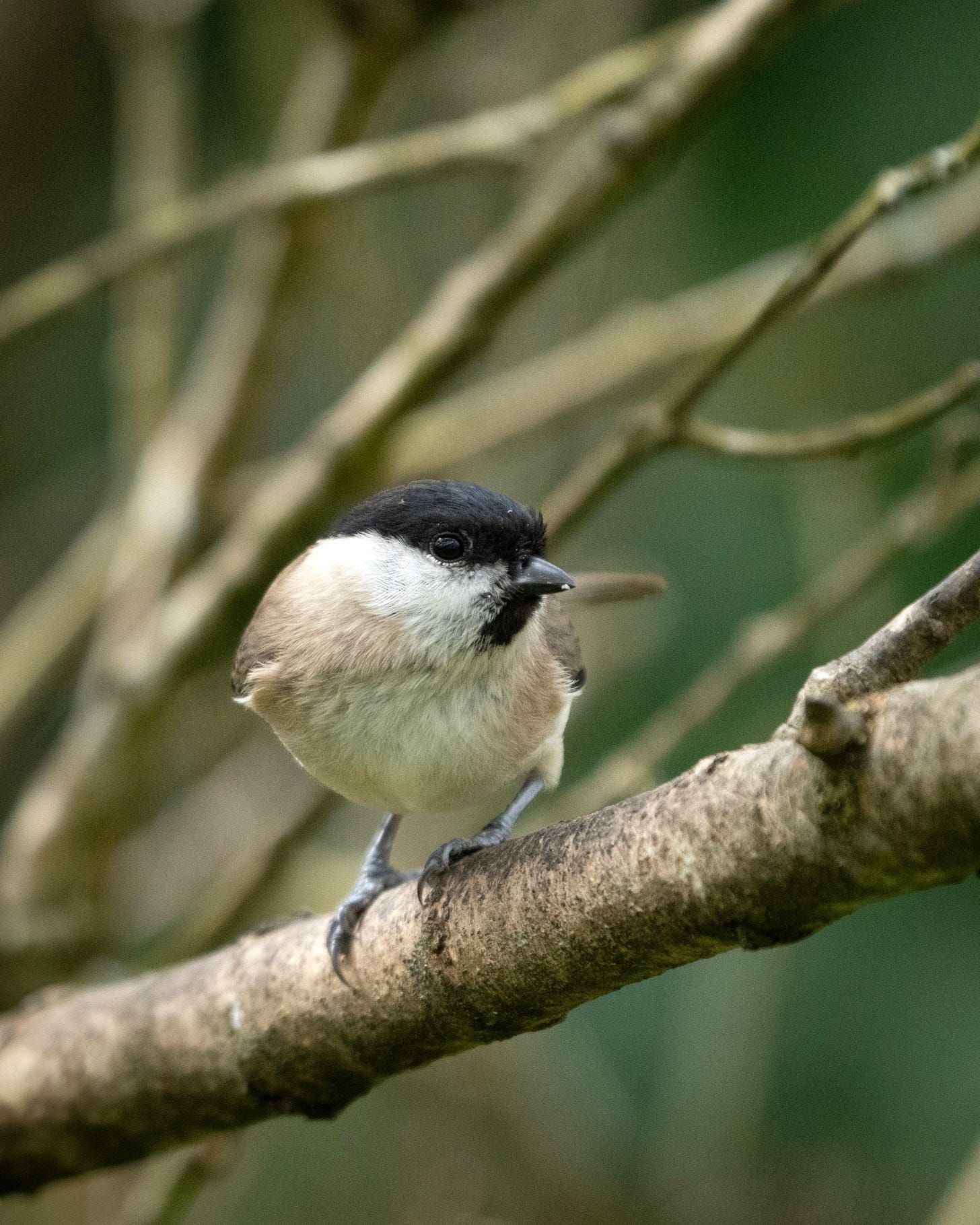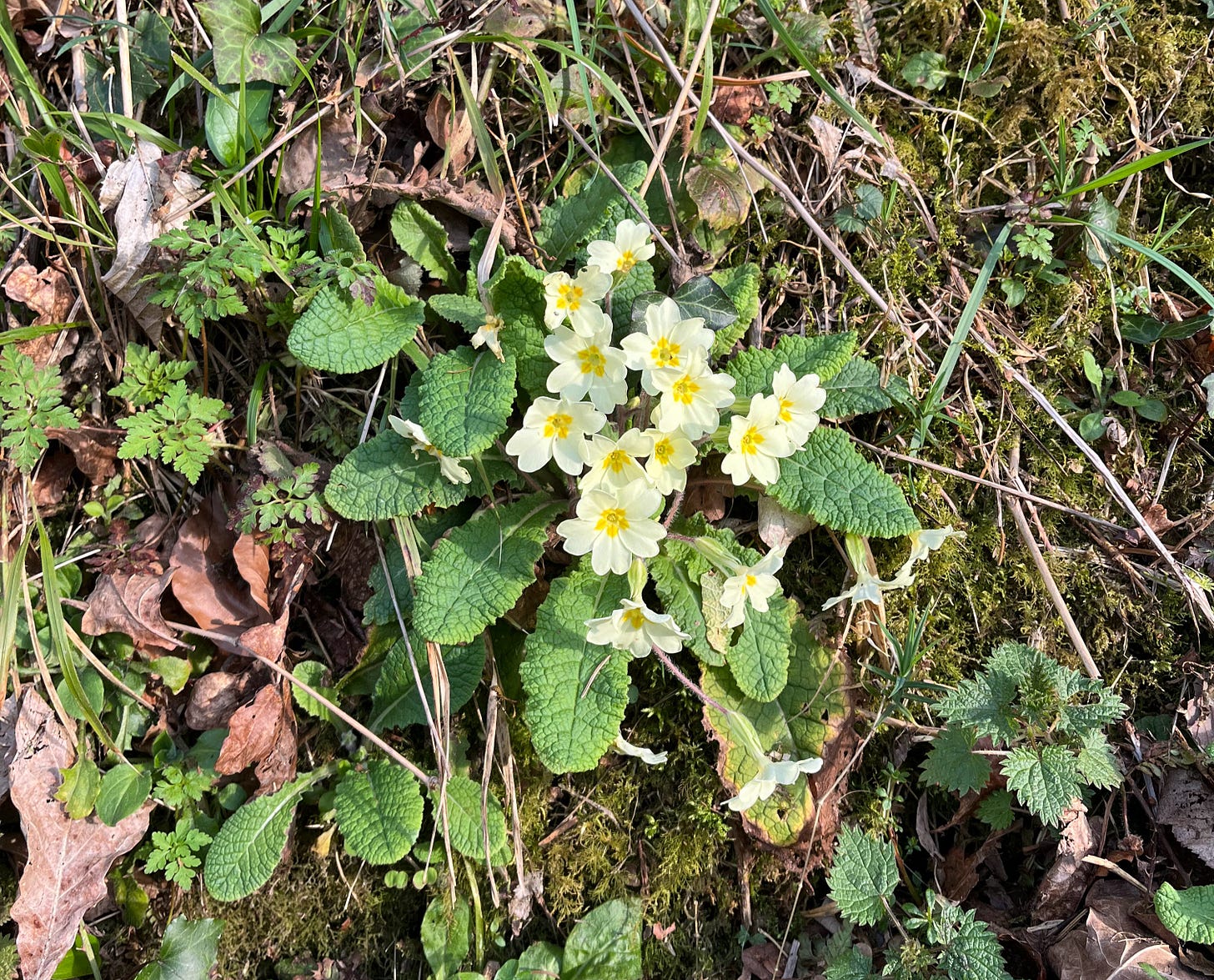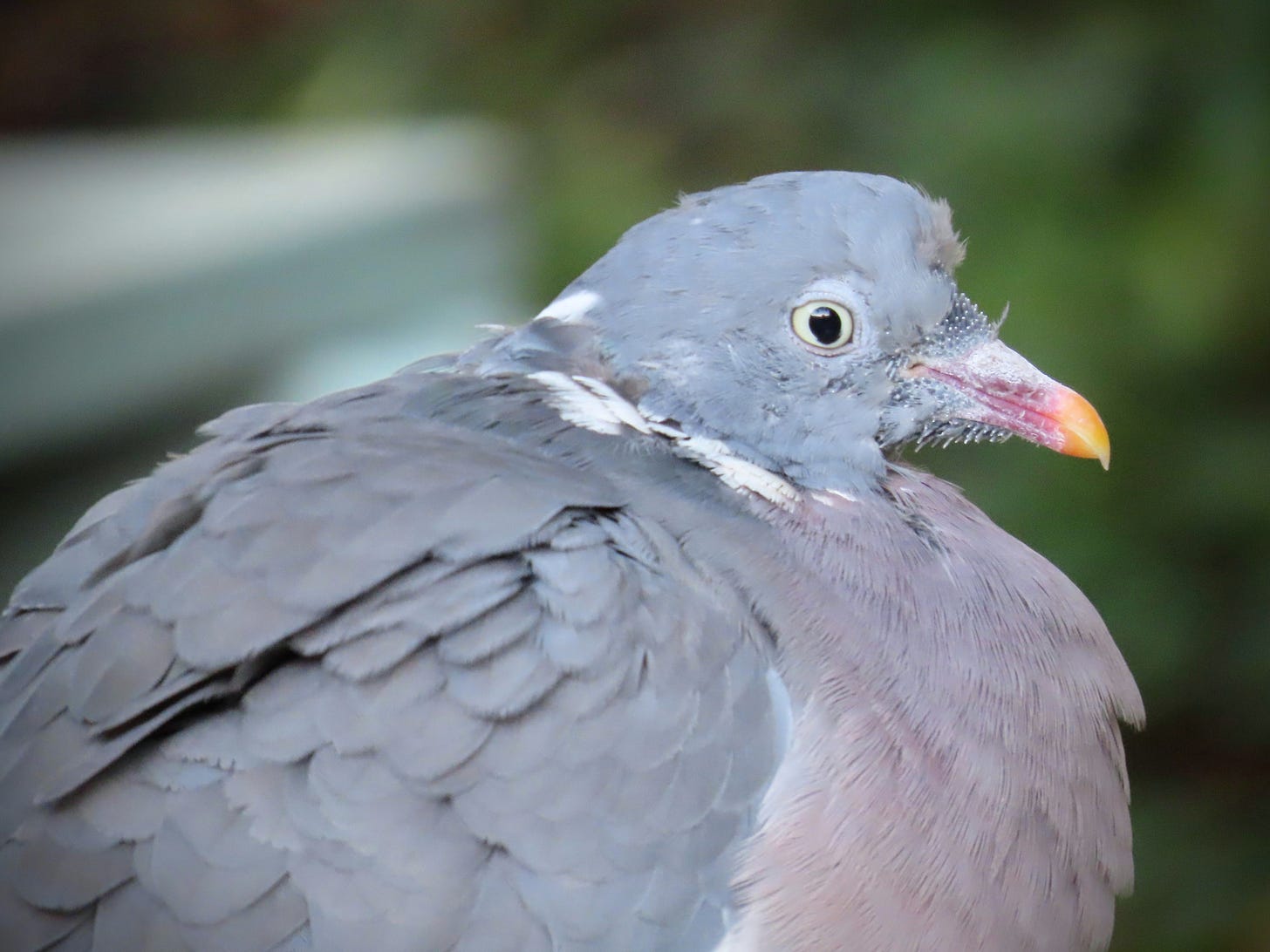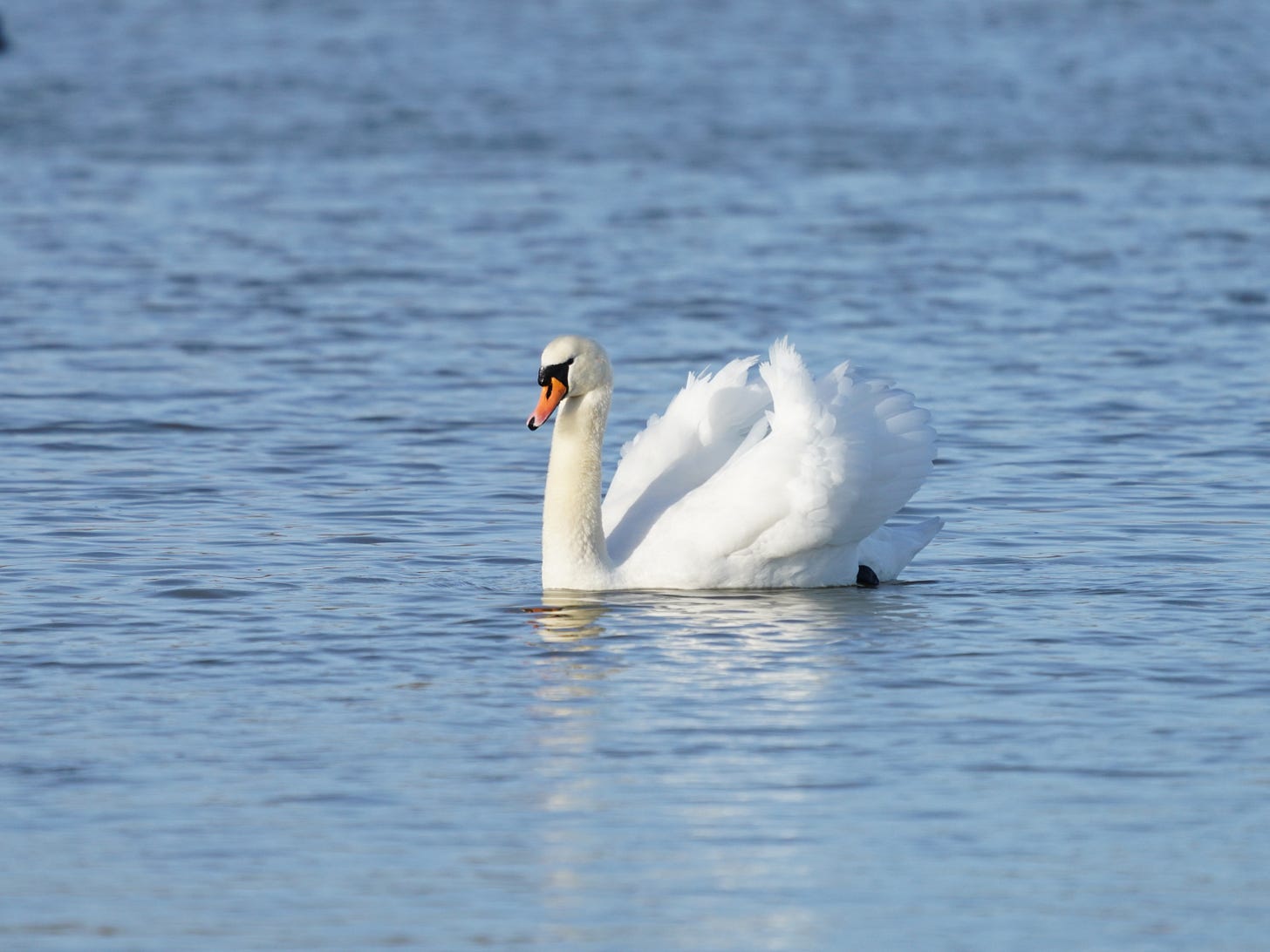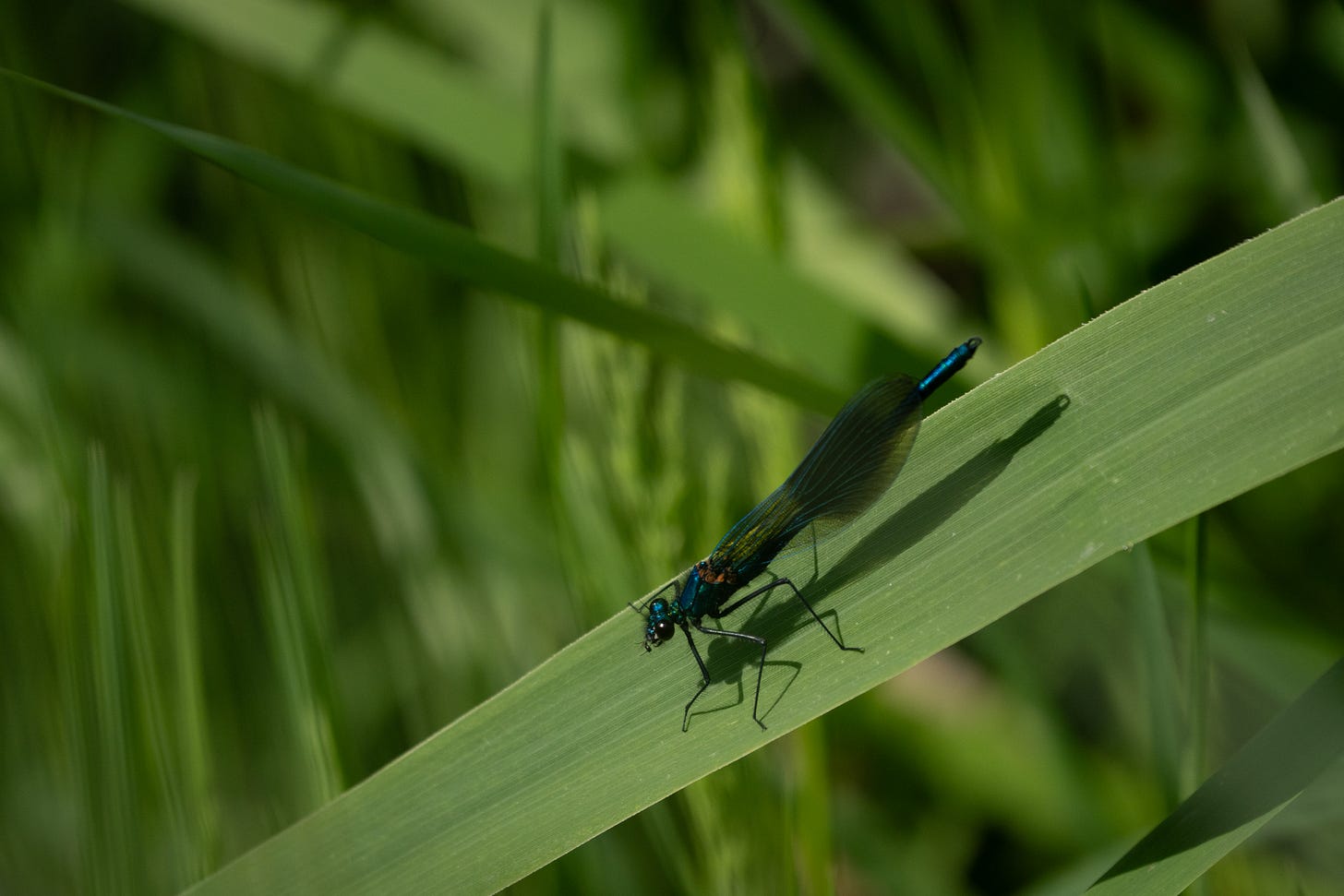I’m in Devon, at my Grandma’s bungalow with a little millstream (leat) that runs through her garden to the mill next door. It’s her funeral this week. She was always kind to animals, a trait that runs strong in the family.
Well, most animals. Cats were not welcome in her garden, and over the years the size of the birds she considered ‘pests’ got smaller and smaller. First, Crows! Then Magpies and Woodpigeons. Jackdaws. I would smile when I saw them loitering around anyway. I suspect Blackbirds would have been next on the list.
Somehow, the Pheasants were welcomed with open arms and handfuls of grain, probably on account of their being friendly enough to approach her door each morning. The big male was her ‘darling chap’, and he was certainly a sight to behold. The ten females he had in tow seemed to think so, too.
I was sitting on the crooked wooden bridge over the leat when I heard an unfamiliar call. To my surprise, a pair of Marsh Tits was at the feeder just a couple of metres away. My grandma’s eyesight was starting to fail, so she had never noticed these little ones to mention them to me.
They’re almost entirely spherical when perched, especially in cooler weather when their feathers are fluffed. One of my favourites, and a real treat to see. We don’t get these in Bedfordshire.
I enjoyed watching a Wren picking its way between the plant pots and primroses. Each Spring, I’d get a call from Grandma to joyfully tell me that the first primroses were blooming. She took great delight, knowing that they were my least favourite flowers; I would feign disgust as she chuckled away.
Since we said goodbye, I have liberated three of her primrose plants and bought two more, which all now sit around my pond. I expect seeing their first blooms next Spring will be bitter sweet – especially as five plants is a bit over the top for an 80cm pond area.
As I sit next to the leat, I wonder what’s happening in my garden back home. It’s that time of year when our most common garden birds are showing off their babies. I had been frantically counting them before I came, comparing the numbers against previous years:
Two juvenile Robins, one more than last year.
One juvenile Dunnock, one less than last year.
One ‘squab’ (juvenile Woodpigeon), same as last year.
No Blackbirds so far, and the tits and finches have yet to bring their offspring onto the feeders. Maybe I’ll see them when I get back, if the feeders haven’t run empty.
Perhaps the hordes of starlings will be eating the daddy long legs larvae from my lawn! And terrorising the neighbourhood with their squawking and screaming. I lose so much time each day they visit, watching their antics and topping up the mealworms.
The squab is an interesting creature. They start out quite ugly, and seem to be an endless source of annoyance to their parents. By the time they have become ‘cute’, the adult birds are actively avoiding the poor thing.
They’re a fascinating species. My favourite things about them:
They make terrible nests. I’ve seen nests made of no more than five twigs on the ground or a garden chair. My neighbours have one that lays an egg straight onto their angled roof every year (with a predictable outcome).
The squabs ‘fledge’ way before they can fly. This isn’t entirely unusual, but for such an ungainly and sizeable bird it seems reckless. Still, given the state of their nests I suspect it’s largely not through choice.
The parents both produce a substance called ‘crop milk’ in their crop (which usually stores small amounts of food). This is the only sustenance the young bird feeds on for a few days after hatching, and is something that some penguins and flamingos also do. In theory, you could milk a pigeon.
On the local river, the cygnets are charming the locals. Dog walkers hesitantly ask each other “Have you seen them today? How many?” when they pass at the gates. At first, eight. Then, five. Usually only three or fewer survive. In the worst year for bird flu, even one of the adults succumbed, leaving just one adult and no cygnets at all.
The adult swans are doing their best to offend passers by so that a healthy distance is maintained. (It’s working.)
Through my lens
This week, keep an eye out for little piles of ‘glitter’ on the ground. These piles are courtesy of two species – the Robins mention above, and the banded demoiselle in these pictures. The Robins (and other birds) catch these beautiful creatures and feed them to their young, leaving a pile of inedible wings behind like a slightly grim confetti.
Your turn
I’ve included more photos this week as the words haven’t come to me quite as easily as usual. I’ll be sitting by the leat reading your replies – do let me know what you’ve seen on your patch.


